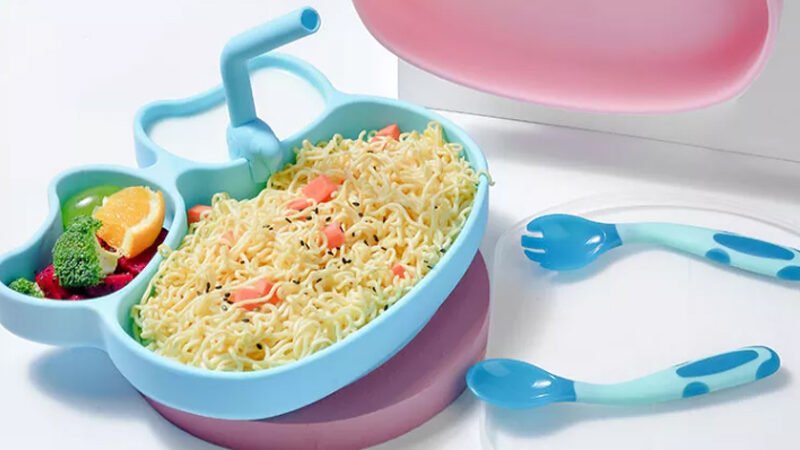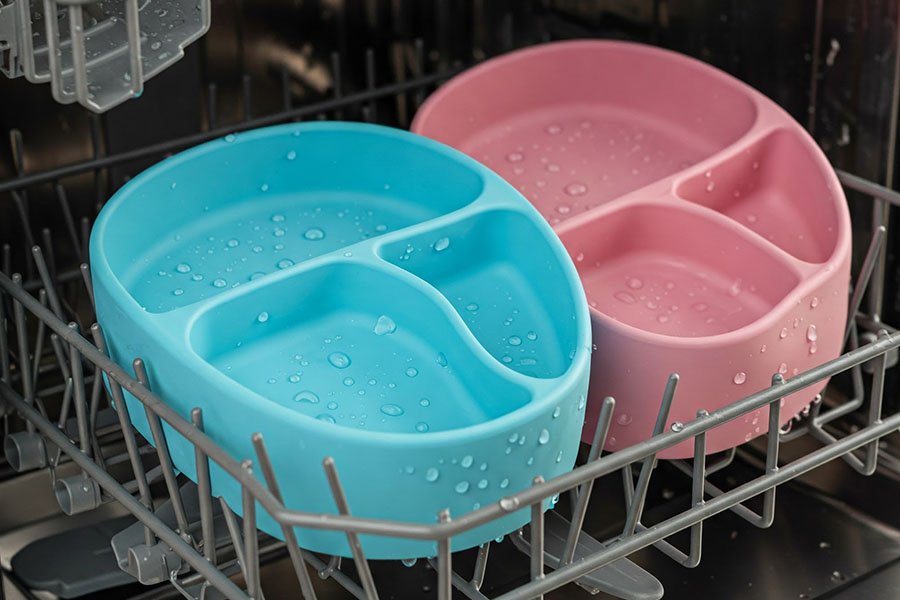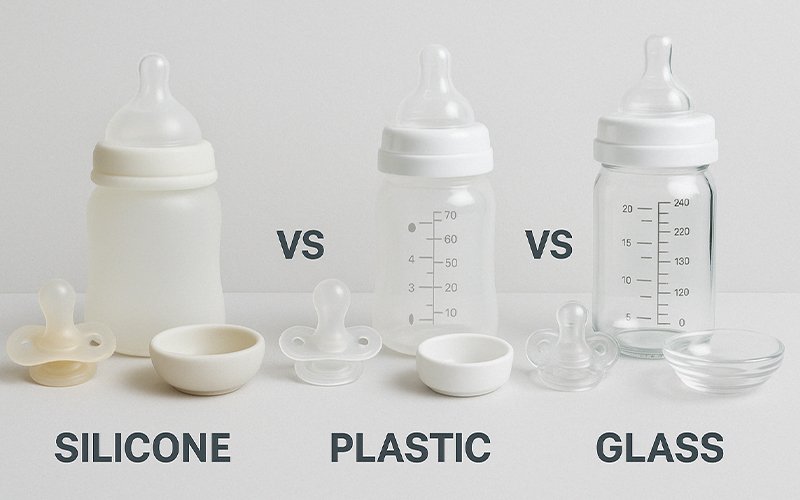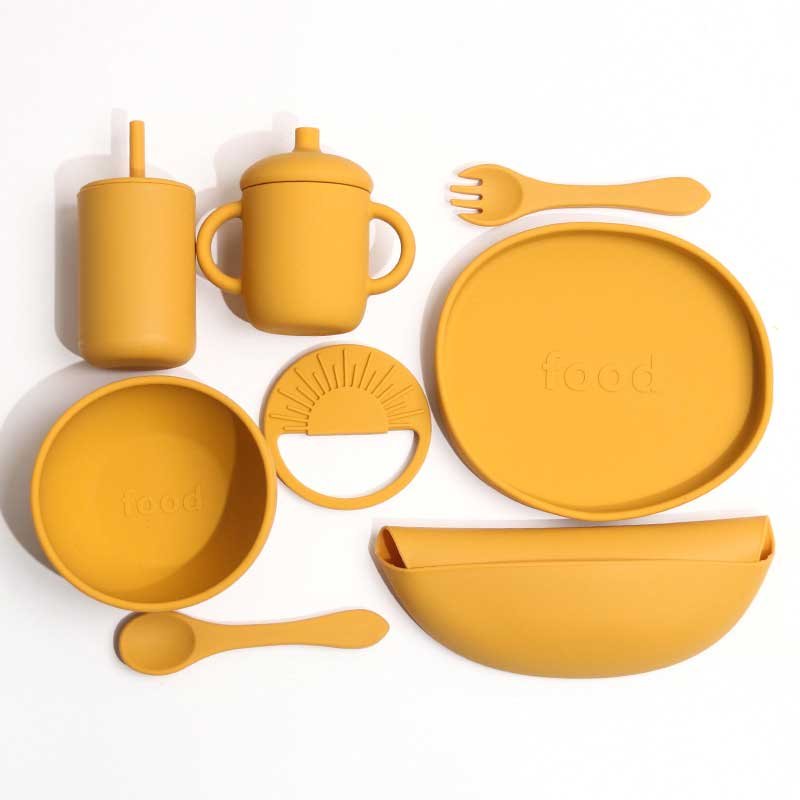Many baby products wear out quickly, making replacements a constant hassle. Parents want items that last, are safe, and stand up to daily use. Is silicone the answer?
Silicone baby feeding products are extremely durable, resistant to heat and cold, and don’t break down easily. They outlast plastic and glass alternatives while staying safe for babies.
Modern parents are looking for better solutions—products that are functional, safe, and long-lasting. Silicone baby feeding gear is growing in popularity for exactly these reasons. But what makes silicone so reliable? Let’s look closer at how silicone holds up under pressure, and why it might be the smart choice for your next baby product line.
What Makes Silicone So Durable?
Some baby products crumble after just a few months. Others melt, warp, or crack. Parents are frustrated with the waste and cost.
Silicone is heat-resistant, flexible, and non-reactive. It doesn’t crack or degrade with regular washing, making it ideal for repeated daily use.

Silicone’s durability comes from its molecular structure. It is a polymer made of silicon, oxygen, and other elements. The silicon-oxygen bond is one of the strongest in nature. This bond is what gives silicone the ability to resist extreme temperatures and pressure. Unlike plastic, which can deform when heated, or glass, which shatters easily, silicone stays intact and functional.
It also resists aging. It doesn’t turn brittle or yellow over time. That’s a big win for parents who need products to last from babyhood to toddler years—or even across multiple children.
Here’s a breakdown:
| Material | Durability | Heat Resistance | Breakability |
|---|---|---|---|
| Plastic | Low to Medium | Low to Medium | Cracks/warps |
| Glass | High | High | Fragile |
| Silicone | Very High | Very High | Flexible & Unbreakable |
I remember testing a silicone bowl by freezing it, boiling it, and tossing it on the floor—nothing happened. That kind of toughness speaks volumes when choosing a feeding product for a curious toddler.
Can Silicone Withstand Daily Wear and Tear?
Daily use involves drops, bites, dishwasher cycles, and constant handling. Can silicone keep up with all that?
Yes. Silicone baby products maintain shape, color, and function even after months of intense use and repeated washing.

Feeding time is messy. Spoons are dropped. Plates are scraped. Bibs are twisted and pulled. Many materials can’t handle this kind of rough treatment, but silicone is made for it.
I’ve put silicone spoons through the dishwasher hundreds of times. They still look new. No warping. No fading. No weird smells. That’s not always the case with plastic. After a few weeks, plastic spoons start to feel flimsy or look stained. Silicone doesn’t have that problem.
Parents also bite-test spoons. If their baby is teething, the first thing they do is chew. Silicone is soft enough to protect baby gums, but strong enough not to break or shed tiny pieces.
This durability is especially valuable for parents who want to reuse baby gear with second or third children. Investing in silicone once can mean years of reliable use.
How Does Silicone Compare to Other Materials?
Choosing the right material matters. Plastic is cheap. Glass is clean. But are they really better?
Compared to plastic and glass, silicone lasts longer, breaks less often, and holds up better under stress.

Let’s look at each:
- Plastic: Prone to scratches and cracks. May release microplastics over time. Often becomes stained or discolored.
- Glass: Chemically stable, but heavy and breakable. Not ideal for toddlers or on-the-go feeding.
- Silicone: Lightweight, unbreakable, stain-resistant, and flexible. Can go from freezer to microwave to dishwasher.
Parents tell me they’re tired of throwing away broken plastic bowls. They want something that lasts. That’s where silicone stands out. It bridges the gap between safety and toughness.
From a manufacturing standpoint, silicone also offers design flexibility. You can mold it into fun shapes and colors without compromising strength. That’s harder to do with glass, and plastic molds may not last as long.
Here’s another quick table:
| Feature | Plastic | Glass | Silicone |
|---|---|---|---|
| Weight | Light | Heavy | Light |
| Safety | Medium | High | Very High |
| Flexibility | Low | None | High |
| Lifespan | Short | Medium | Long |
| Eco-Friendliness | Low | Medium | High |
Are Silicone Baby Products Safe Over Time?
Many parents worry that materials degrade and become unsafe. Does silicone stay non-toxic and baby-friendly?
Silicone stays stable under high heat and repeated use, making it safe for long-term contact with baby food and mouths.

Silicone is considered food-grade when it meets strict safety standards. It doesn’t leach chemicals when heated. It doesn’t absorb odors or flavors. And it doesn’t release microplastics.
This matters more than ever. Parents are becoming more aware of what materials touch their baby’s food. I’ve had customers request certificates for every product, just to feel reassured. We offer LFGB and FDA certifications for that reason.
Another plus: silicone doesn’t grow mold easily. If dried properly, it resists bacteria far better than cloth or wood. That’s important for items like bibs and teethers.
When stored and cleaned correctly, silicone remains safe for years. It doesn’t flake, fade, or react with acidic foods. Even after heavy use, it doesn’t compromise baby health.
How Can Silicone Support Eco-Friendly Parenting?
Many baby products go to waste after a few months. Can silicone help parents live more sustainably?
Yes. Silicone products are reusable, recyclable in some areas, and reduce the need for constant replacements.
One big issue with parenting is waste. Diapers, wipes, plastic packaging—it adds up fast. Feeding products are often tossed once they wear out or break. But silicone can stay in use for years.
That’s why I always recommend silicone to parents who care about the environment. It’s not perfect—recycling silicone requires special facilities—but it beats disposable or short-life products by far.
Silicone doesn’t degrade into harmful micro-particles. It can be repurposed or passed on. Many of my customers donate their old silicone items to daycares or family friends.
Plus, because silicone doesn’t stain or hold smells, it doesn’t feel “used” even after long-term use. That keeps it in circulation longer, reducing overall waste.
Here’s what sustainability looks like:
- Long-term use = fewer purchases.
- Stain-resistance = less need to replace.
- Durability = less landfill waste.
It’s a small change that makes a big impact, especially over years of parenting.
What Should You Look For in High-Quality Silicone Products?
Not all silicone products are made equal. How do you tell which ones will actually last?
Look for certifications, solid construction, and attention to design. High-quality silicone feels sturdy and performs well under pressure.

When evaluating silicone feeding gear, I always check three things:
- Certification: Look for LFGB, FDA, or BPA-free labels. These show the silicone has passed health and safety tests.
- Thickness: Flimsy silicone tears more easily. Thick, solid silicone holds its shape and stands up to stretching and bending.
- Design details: Smooth edges, reinforced parts, and well-molded features reduce weak spots.
I’ve tested dozens of samples from different suppliers. Some feel like rubbery plastic—too soft, too thin, or too porous. Others are firm, smooth, and perfectly shaped. The difference is clear once you handle them.
Our own line at RuiYang focuses on premium materials. We use food-grade platinum silicone. That means no fillers, no odors, and better temperature resistance.
When buyers like John from Little Steps Baby Care are sourcing products, these details matter. They protect babies and reduce returns from unhappy customers.
Conclusion
Silicone baby feeding products are tough, safe, and long-lasting—an ideal choice for parents who value durability and sustainability.